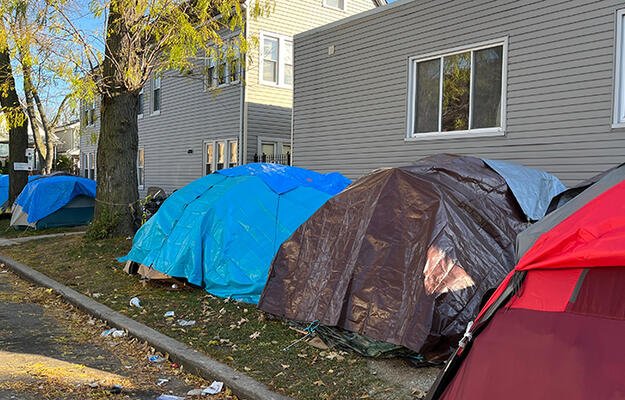
Can Permanent Supportive Housing Create Community for Survivors of Intimate Partner Violence?
- Title:
- Can Permanent Supportive Housing Create Community for Survivors of Intimate Partner Violence?
- Author:
-
Andrea Hetling, Amy Dunford, and Hilary Botein
- Source:
-
Housing, Theory and Society
- Publication Date:
-
2019
Survivors of intimate partner violence (IPV) need a safe environment that supports healthy relationships and builds social capital (benefits gained from relationships with nonfamily members), but many survivors experience difficulty finding a community. Controlling tactics on the part of abusers often compromise past relationships, and the shame or stigma of abuse may make it hard for IPV survivors to form new relationships.
A recent study explored the potential for permanent supportive housing (PSH) to create an environment in which IPV survivors can develop communities and grow social capital. PSH provides decent, affordable housing with few requirements or restrictions for people experiencing homelessness. The authors interviewed 13 women who lived in a PSH development specifically for IPV survivors about their experiences. The women ranged in age from 20 to 60 and identified as African American, Latinx, or multiracial, and most were caring for children. The primary research questions asked how survivors viewed their community within the development and how that community manifested in relationships with other residents. Participants were interviewed four times over a year and a half through semistructured interviews and were asked to describe the PSH development and services, their relationships with residents, and the sense of community.
The authors found that some residents developed a sense of community defined by their shared physical space and shared identity, but the experiences of individual women and their relationships with the community varied. Nearly all residents described some positive aspects, such as feeling happy to have an affordable home, but many also experienced negative feelings and interactions in their day-to-day life.
Key findings
- Many of the women interviewed saw their housing unit as their first independent, permanent home. Nearly every woman reported positive feelings associated with their housing unit, such as that it was new, safe, clean, affordable, or large for New York City.
- Although the building was viewed as safe, many women expressed concerns about the safety in the surrounding neighborhood. IPV survivors are often encouraged to move to neighborhoods where they have no connections to be safely removed from their abuser. Although this is for their safety, it can also lead survivors to feel that the new neighborhood is unfamiliar and ominous. As a result of this neighborhood perception, internal common space was viewed as critically important.
- The women reported mixed feelings about how much they shared a sense of identity with the other women in the PSH development. Some women felt connected to others because, as one woman reported, “it’s nice knowing that you have people here that know your situation.” Some women also developed strong relationships with women in similar situations, such as young mothers with full-time jobs. However, other women expressed disapproval of some residents or simply preferred to be alone.
- Many women in the study described the building’s residents as a community or even a family. Through this community, the women could exchange material and emotional support. This could include everything from giving away shoes to sharing babysitting arrangements.
Policy implications
- Support groups should be more widely used because they help build trust among residents. Although many residents developed relationships through informal interactions, these can be difficult to form initially and maintain over time.
Photo by Africa Studio/Shutterstock


